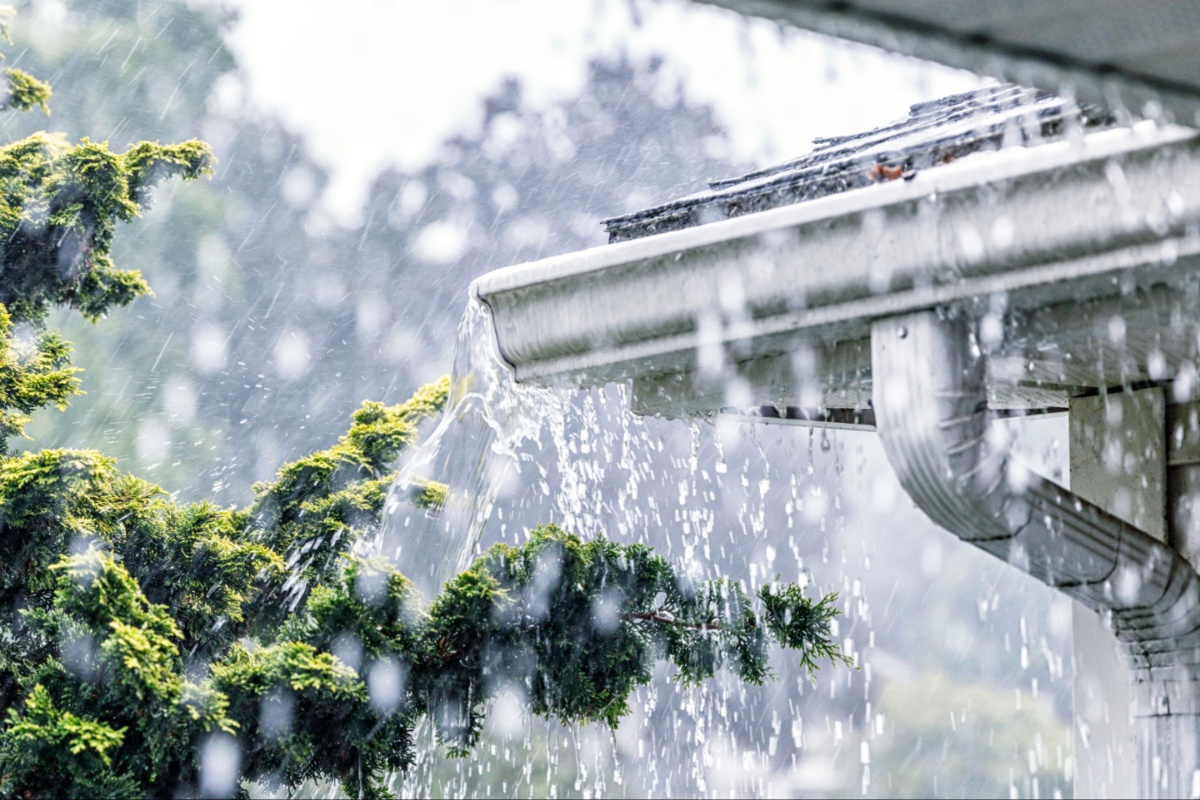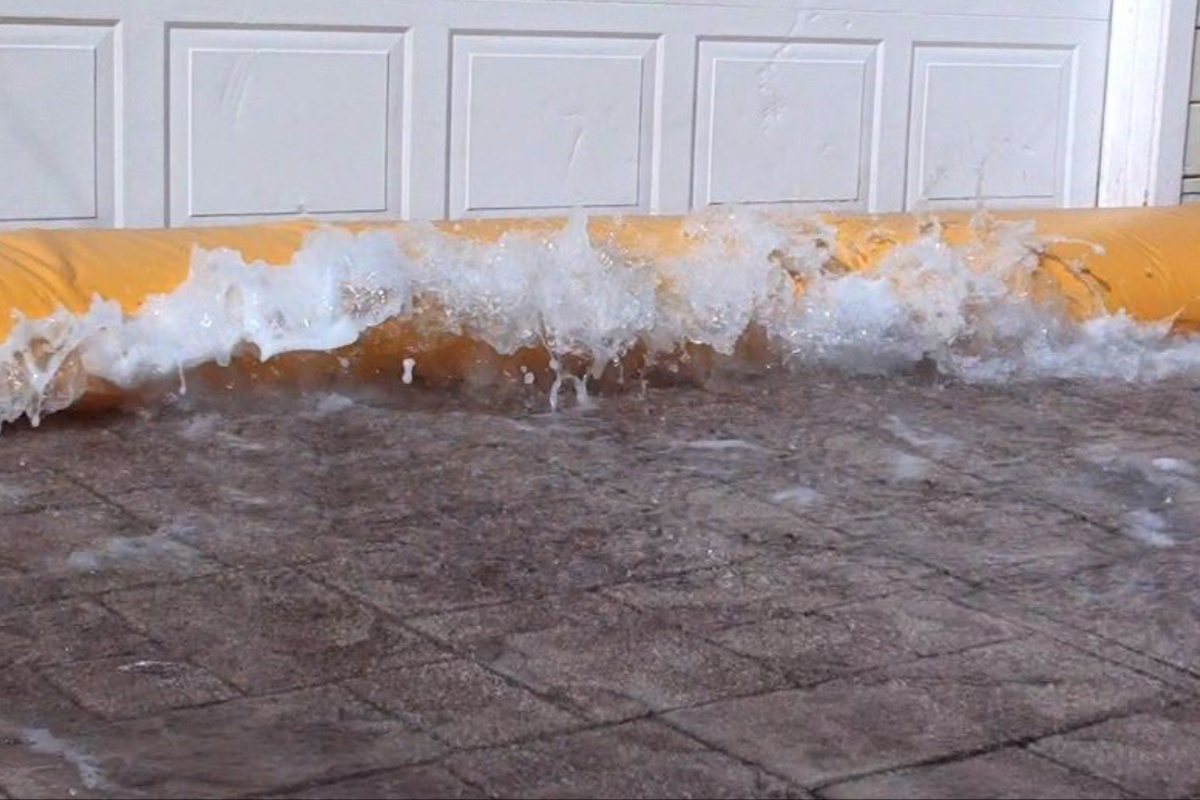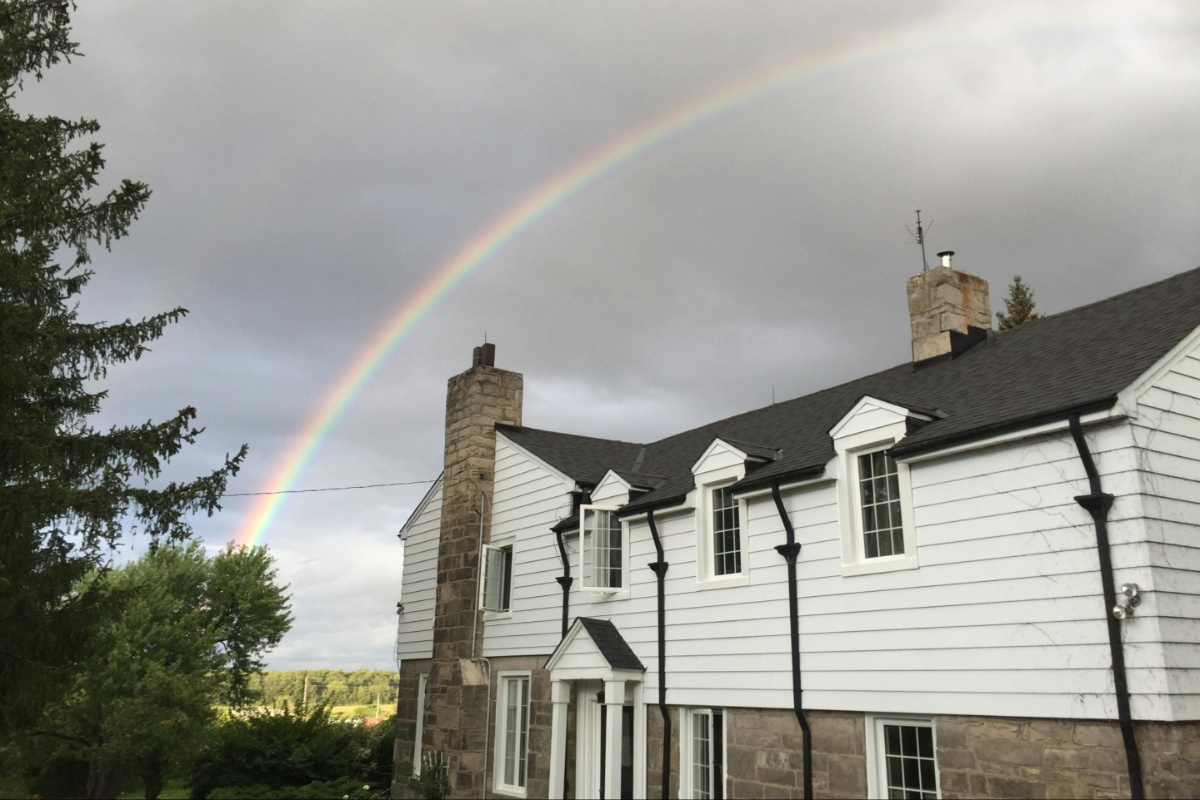Intro: When is twister season in 2025?1. Twister season 2025: The right way to put together your home for a twister or hurricane?2. Storm preparation: Create an emergency provide kit3. Storm preparation checklist4. Actions to take throughout a storm (twister and hurricane)5. What to not do throughout a twister?6. What to not do throughout a hurricane?7. Actions to take after a storm (twister and hurricane)8. Want-to-know FAQs
As 2025’s twister season approaches, prioritizing your security and making certain your private home is prepared for extreme climate is vital, primarily for those who reside in areas susceptible to those highly effective occasions, comparable to Twister Alley (Texas, Oklahoma, Kansas, Nebraska) or Hurricane Alley (Florida, Texas, Louisiana, and the Carolinas)
Whether or not going through the violent winds of a twister or the torrential downpours and highly effective gusts of a hurricane, proactive storm preparation is the important thing to security and minimizing harm. To offer you essentially the most dependable info, we’ve consulted with consultants to get important steps, sensible recommendation, and checklists that can assist you successfully put together your private home for each tornadoes and hurricanes throughout storm season. Let’s delve into put together your private home this storm season and fortify your defenses towards no matter Mom Nature could carry.
“Storms don’t wait for readiness — prepare like it’s coming tomorrow, and recover like your home depends on it. Before the storm, secure what you can see and service what you can’t. Afterward, document every detail and prioritize safety over speed. A well-prepared homeowner weathers the storm twice: once in the moment, and again in the recovery.” –Dustin Gutkowski, proprietor of Outcomes Roofing
When and the place is twister season, precisely?
Twister season in america sometimes happens within the spring and early summer season, with peak exercise from April via June. This season is particularly energetic within the central a part of the nation. Nevertheless, tornadoes can happen in different areas and through different occasions of the 12 months, significantly within the Southeast through the late fall and winter months when atmospheric circumstances are proper. Along with the normal Twister Alley, there are secondary areas of frequent twister exercise, comparable to “Hoosier Alley” within the Midwest, which incorporates components of Indiana, Illinois, Ohio, and components of Kentucky — and “Dixie Alley” within the Southeast, which incorporates states like Mississippi, Alabama, Tennessee, and components of Georgia.
Hurricane season, then again, primarily impacts the Gulf Coast, Atlantic Coast, and southeastern U.S., operating from June 1 via November 30, with peak exercise normally from August to October. Coastal states like Florida, Louisiana, Texas, and the Carolinas are most in danger. Whereas hurricanes are much less frequent within the Northeast, they’ll nonetheless carry important impacts as storms journey northward alongside the coast. Each tornadoes and hurricanes are highly effective pure forces, and understanding their seasonal patterns helps communities higher put together for extreme climate.
Twister season 2025: The right way to put together your home for a twister or hurricane?
 Picture courtesy of My Gutter Physician
Picture courtesy of My Gutter Physician
1. Safe your private home’s exterior
Getting ready your private home’s exterior is a important facet of storm readiness. To safe home windows for storms, take into account putting in sturdy storm shutters or upgrading to impact-resistant glass.
Equally, to bolster doorways for storms, guarantee frames are sturdy and take into account including deadbolt locks. Roof storm preparation includes an intensive inspection to restore any free shingles and correctly safe vents and flashing. Sustaining your property’s resilience towards weather-related dangers includes a number of key issues, extending past the plain.
Schedule a gutter tuneup
Don’t overlook your gutters and downspouts; holding them clear ensures correct water drainage away out of your basis. “One of the most overlooked problems you can have is not keeping your gutters clean. Clogged gutters can back up, and either push water under your shingles and leak inside the home, or worse, they can cause roof edge rot. Clogged and full gutters can also become so heavy that they fall, ripping the edge of the roof and the fascia with it,” cautions Brandi Millard Noriega, Vice-President of Millard Roofing, Inc.
Aleks Krylov, proprietor of Stern Gutters in New Jersey, additionally extremely recommends: schedule a gutter tune-up, which may make the distinction between a safe residence and expensive harm.
“Make sure the tune-up service includes full cleaning, including a check for clogs in the downspouts, plus a system check to tighten anything that could be loosened or ripped off by high winds, including gutters, fascia trim, and soffits. Inspect the gutter slope to ensure proper drainage, reseal any vulnerable end caps and corners, tighten or replace hangers and brackets, and make sure downspouts and elbows are secure. Loose gutters are often the first to go in a storm; we’ve seen cases where a detached gutter was picked up by the wind and smashed against windows or siding, even landing on roofs and damaging shingles. Storm prep isn’t just about clearing water paths — it’s about locking down the parts most likely to fail. After the storm passes, a quick gutter cleanout is smart, too, as twigs and leaves tend to pile up fast and can block proper drainage.”
Lastly, take proactive steps together with your landscaping by trimming timber to reduce the chance of falling branches throughout storms, and keep in mind to safe all outside furnishings, decorations, and trash cans to stop them from changing into harmful projectiles in excessive winds.
Clear roofline from particles and overhanging branches.
Skilled tip: “Before a storm hits, ensure your roofline is clear of moss, debris, and overhanging branches — even a blocked gutter can cause significant water ingress during heavy rain. After the storm, prioritize a safe ground-level inspection and photograph any visible damage. Then call in a trusted roofing professional to assess structural issues, especially around flashing, tiles, and ridge lines where damage is often hidden.” –Tracey Pilkington, Roofing Administrator with Yorkshire Roofing
Safe window screens and examine weatherstripping round doorways.
Skilled suggestions: “Before a storm, take down or secure your window screens. They tear easily and can turn into flying debris when the wind picks up. Check that the weatherstripping around your doors is sealing properly to keep water out. After the storm passes, walk through your home and look at the ceilings and upper corners of each room. If you see any water stains, even small ones, your roof likely took on damage and it is time to call a professional before it gets worse.” –Johnny Merehouyias, manufacturing supervisor with Alexandria Dwelling Options LLC
“To prepare your home for storms or inclement weather, be sure to weatherize by sealing windows and doors. Also, be sure that any dead tree branches are trimmed so they don’t fall on your home. If there is a power outage after a storm, seek public spaces that can provide access to heating, cooling, or outlets to charge phones. Solar that is paired with batteries can provide back-up power in the case of an outage, and generate significant energy bill savings throughout the year.” –Margo Weisz, Government Director, TEPRI
“A house’s most unprotected space in a storm is its home windows. If your private home can have storm home windows put in, you’ll be able to commerce out the glass in your storm home windows for polycarbonate. Storm home windows with polycarbonate are extra impression resistant than plywood, permitting your private home to at all times be storm-ready.
Though polycarbonate scratches extra simply than glass, it could possibly final for years with out having to get replaced from breakage, supplying you with the safety of plywood with out the trouble of regularly putting in and eradicating.”- Drew Harris, CEO of Tualatin Valley Glass
Correctly insulate your private home for this 12 months’s twister and hurricane season
Skilled tip: “Properly insulating a home –including floor, ceiling, wall, attic, and pipes — not only reduces energy use and costs but also protects the home and pipes from extreme weather. Efficient windows or solar screens and reducing leaks or gaps with caulk or weatherstripping can add to this protection. If there’s a power outage, the home can stay at a safe temperature for longer. Take care when sealing a home to make sure there aren’t sources of air pollution like carbon monoxide that could become more harmful in a sealed environment. Having an onsite source of power like a solar-powered battery bank, even just to charge devices can be very helpful, as well.” –Houston Superior Analysis Heart
Water diversion tubes
 Picture courtesy of HydraBarrier
Picture courtesy of HydraBarrier
Skilled tip: “Before the skies darken, don’t just stock up—strategically protect. Use water diversion tubes (like the HydraBarrier) to guide water away from doors, garages, and vulnerable landscaping. After the storm, deploy a high-efficiency utility pump (like a HydraPump Smart Pump) to automatically detect and quickly clear pooled water from low spots, patios, or flooded crawl spaces — speeding recovery and preventing further damage. Storm prep isn’t just about surviving the storm — it’s about bouncing back faster, smarter, and drier.” – Watershed Improvements
Backup generator or photo voltaic panels
 Picture courtesy of Northwest Hills Photo voltaic
Picture courtesy of Northwest Hills Photo voltaic
To make sure uninterrupted energy throughout a storm and potential outages, take into account the peace of thoughts a backup generator or photo voltaic panel system can present.
Skilled tip: “Earlier than a storm, take into account putting in a photo voltaic battery backup system to take care of energy even throughout grid failures. This ensures important home equipment and medical units preserve operating, offering owners with peace of thoughts.
After the storm, use a drone or skilled inspection to examine for points like hail strikes or fallen tree branches that will have impacted your panels. Even when there’s no seen harm, monitor your system via its efficiency app. Many fashionable photo voltaic setups supply real-time diagnostics that can assist you spot drops in manufacturing.
If harm is detected and the panels are not performing as anticipated, most respected photo voltaic corporations will exchange affected panels at no extra value — because of producer warranties or insurance coverage help.” – Richard Barton with Northwest Hills Photo voltaic
 Picture courtesy of Northwest Hills Photo voltaic
Picture courtesy of Northwest Hills Photo voltaic
Repair free shingles and make a household plan
Skilled suggestions: “To prepare for significant rain, hail, or a hurricane, ensure your roofing is in good condition—inspect for loose shingles and leaks, and make necessary repairs to prevent water intrusion. Reinforce or replace siding that may be susceptible to wind and hail damage, and clear gutters and downspouts to ensure proper drainage and avoid flooding around your foundation. Additionally, create a ‘storm communication plan’ with family members, ensuring everyone knows how to stay informed and connected during the storm. These proactive steps can safeguard your home and provide peace of mind when severe weather strikes.”- Myron Stoltzfus-owner of Greatest Contracting
“Storms can be unpredictable, but a little prep goes a long way—have your gutters cleaned, check your roof and siding, make sure your windows are sealed, and don’t forget about the garage door—it’s a big target in high winds. After the storm, you can recheck the gutters for clogs and survey any broken branches that may have fallen, causing damage to your roofing, siding, and windows. Let the pros handle the damage inspection and repairs when it comes to getting on your roof or unjamming a stuck garage door. It’s not worth risking your safety trying to spot damage that can be easy to miss. We know what to look for, and we’ll make sure everything’s done right.”— Cory Jay, proprietor of Benefit Dwelling Professionals
2. Storm preparation: Create an emergency provide package
Prep for the 2025 twister and hurricane season. Are you prepared with residence necessities if a storm hits? A well-stocked emergency package for residence is an important element of your general preparedness technique for weathering any storm.
Having a complete storm survival package readily accessible can considerably enhance your security and luxury throughout and after extreme climate. This record, a key a part of your proactive storm preparation, will aid you collect the required provides to make sure you’re well-equipped for any eventuality.

3. Utility security
A important facet of storm preparation includes understanding your private home’s utility programs and realizing how and when to securely shut them off. Familiarize your self with the placement of your principal shut-off valves or switches for fuel, electrical energy, and water, as realizing carry out a fuel shut-off storm process or handle electrical energy security storm conditions can stop important harm or hazards. It’s important to be taught the correct strategies for turning off utilities earlier than storm circumstances worsen, making certain you’ll be able to act shortly and safely if instructed by authorities or if harm to your property happens.
4. Overview insurance coverage protection previous to hurricane and twister season
 Picture by Viktoria Slowikowska
Picture by Viktoria Slowikowska
Defending your funds from potential storm harm is an important a part of complete preparedness. Take the time to totally perceive your present house owner’s or renter’s insurance coverage coverage to know precisely what’s and isn’t lined within the occasion of twister and hurricane harm. If you happen to reside in an space prone to flooding, fastidiously take into account acquiring separate flood insurance coverage, as commonplace house owner’s insurance policies sometimes don’t cowl flood-related losses. To streamline any potential claims, make sure to doc your belongings with pictures and movies, offering invaluable proof for house owner’s insurance coverage storm harm, wind harm insurance coverage, or flood claims.
Understanding and quantifying the potential damaging impacts of local weather change on a particular entity is essential, and a local weather danger rating serves as a key metric for this function. Jeremy Porter, Head of Local weather Implications Analysis at First Road, emphasizes proactive preparation:
“Start by checking your climate risk score from First Street — it gives you a clear, localized understanding of the types of hazards your property is most vulnerable to, whether it’s flooding, wildfire, or extreme wind. That knowledge helps you make informed decisions about how to prepare. And just as critical: keep your insurance documents accessible and backed up digitally. After a disaster, having immediate access to those records can significantly reduce delays in filing claims and getting the support you need to recover.”
By synthesizing complicated local weather information and projecting future eventualities, these scores, comparable to these supplied by First Road, supply a transparent evaluation of vulnerability to varied climate-related hazards. In the end, leveraging local weather danger scores empowers stakeholders to proactively handle dangers, improve resilience, and allocate sources successfully within the face of a altering local weather.
“Being ready for a possible property loss from a flood could make the claim-filing course of a lot simpler. A method to do this is by creating a whole stock of your belongings. Use your telephone to take a video of every of the rooms in your house. Open cupboards and closets to make sure you have an intensive document of your belongings.
It might shock you to appreciate how a lot private property you’ve acquired over time. Be sure you save a replica of the video to a cloud storage service (comparable to iCloud or Google Drive) so you’ll be able to simply entry it later. Keep in mind, flooding from a storm will not be lined by your house owner’s coverage, and federal catastrophe grants common about $5,000.” – Aon Edge
Twister and hurricane season preparation guidelines
You put together your home for extreme climate by:
Growing a household emergency plan and training it.
Securing home windows and doorways (putting in storm shutters, reinforcing doorways).
Reinforcing your roof and making certain it’s in good restore.
Cleansing gutters and downspouts.
Trimming timber and shrubs round your home.
Securing outside furnishings and free objects.
Realizing shut off utilities (fuel, electrical energy, water).
Reviewing your insurance coverage protection.
Actions to take throughout a storm (twister and hurricane)
Throughout a twister, your main aim is to search out essentially the most safe shelter instantly. When you have a basement, storm cellar, or designated tornado-safe room, search refuge there directly. If these choices aren’t out there, transfer to an inside room on the bottom flooring of your private home, away from all home windows, doorways, and out of doors partitions. Crouch low to the bottom, ideally in your knees, and shield your head and neck together with your arms or a blanket. Do not forget that pace is crucial throughout a twister warning, so don’t delay in in search of shelter throughout twister circumstances.
When a hurricane approaches, the required actions rely in your location and official directions. If an evacuation order is issued, comply with it instantly and head to a delegated evacuation zone or shelter. If you’re not in an evacuation zone and select to remain in your house, safe all home windows and doorways by boarding them up with plywood or utilizing storm shutters. Transfer to an inside room on the best degree that’s protected from potential flooding. Keep knowledgeable concerning the storm’s progress and any up to date directions from dependable sources. Whether or not sheltering from a twister or a hurricane, remaining calm and knowledgeable are key elements of storm preparation and making certain your twister security at residence or navigating hurricane security at residence.
What to not do throughout a twister?
Don’t go close to home windows, doorways, or exterior partitions. These areas supply little safety from flying particles.
Don’t remain in a automotive or cell residence. These buildings present minimal shelter from twister winds.
Don’t search shelter underneath a bridge or overpass. Wind forces might be amplified in these areas, making them harmful.
Do not stay on the higher flooring of a constructing. Search the bottom doable degree for the best safety.
Don’t waste time making an attempt to collect non-essential belongings. Your security is the highest precedence.
Don’t go outdoors to take a look at the twister. Flying particles could cause severe damage or demise.
What to not do throughout a hurricane?
Don’t ignore or delay evacuation orders. If authorities challenge an evacuation order, go away instantly. Your security is the precedence.
Don’t go away home windows and doorways unsecured for those who select to remain. Guarantee all home windows are shuttered or boarded up and doorways are strengthened as greatest as doable.
Don’t remain in exterior rooms or on decrease ranges vulnerable to flooding. Search shelter throughout hurricane circumstances in an inside room on the best degree of your private home that’s protected from rising water.
Don’t depend on unverified or social media sources for storm info. Keep up to date on the hurricane’s progress and official directions via dependable sources like NOAA, native emergency administration, and respected information shops for correct hurricane safety-at-home steering.
Actions to take after a storm (twister and hurricane)
 Picture by Doug Brown
Picture by Doug Brown
As soon as the storm has handed, your security stays the highest precedence. Earlier than venturing outdoors, at all times anticipate official affirmation from authorities that it’s protected to take action. Be aware of post-storm hazards comparable to downed energy strains, scattered particles, and doubtlessly unstable buildings. It’s essential to keep away from any standing floodwaters, as they might be contaminated with dangerous substances and even be electrically charged. Once you do go outdoors, shield your self by sporting sturdy sneakers and applicable clothes to stop accidents from sharp objects and particles. Keep in mind, prioritizing after-storm security will assist stop additional hurt.
“Costly home repairs can be prevented by making sure gutter systems are clog-free and draining properly before any major storm event. Once the storm has passed, we recommend that homeowners check their basements for signs of leaks, moisture, or cracking. Attic spaces and interior walls should be checked for signs of leaks or wet spots.” – My Gutter Physician
As soon as it’s protected to enter, carry out a extra detailed residence harm evaluation after the storm, whether or not it’s a twister harm inspection or a hurricane harm inspection. Promptly contact your insurance coverage firm to file an insurance coverage declare for storm harm, offering them together with your coverage quantity and detailed details about the harm you’ve documented. Understanding the house owner’s insurance coverage declare course of will assist expedite your restoration.
“If a storm is imminent, concentrate on your private home’s resilience. Key steps embody sealing cracks and gaps within the roof and partitions, clearing particles from the roof and gutters, and trimming timber and shrubs close to the house. After the storm, examine the attic, roof, and basis for leaks or structural shifts, and take away particles safely.
Then, plan upgrades to assist your private home face up to future storms. Extreme storms can have an effect on all 5 pillars of residence efficiency: Security, Consolation, Operations, Resilience, and Vitality. Think about enhancements like impact-rated home windows, strengthened doorways, backup energy programs, and higher insulation. Free instruments just like the Pearl app present customized insights throughout all 5 pillars to determine and tackle weak spots earlier than a storm, monitor upgrades, and uncover rebate alternatives. These steps can save money and time whereas enhancing your private home’s efficiency and worth.” – Cynthia Adams, CEO and Co-Founder at Pearl
To mitigate additional losses, take cheap steps to carry out momentary residence repairs after a storm, comparable to utilizing a tarp for roof harm or boarding up home windows. Preserve detailed information and receipts for all supplies and work associated to those momentary fixes.
Because the restoration section begins, comply with native tips for storm particles elimination and train warning through the residence clean-up after the storm, at all times sporting applicable security gear. Do not forget that catastrophe restoration sources are sometimes out there via native organizations, so don’t hesitate to hunt help if wanted as you navigate the aftermath of the storm.
“Once the storm has passed, inspect your gutters and downspouts for any damage. High winds and heavy rain can cause gutters to pull away from the fascia, leak at the seams, or become clogged with storm debris. Check for standing water near your home, as this could indicate drainage issues. If you notice any sagging, detached sections, or blockages, address them immediately to prevent long-term damage. Regular maintenance and timely repairs can help protect your home from costly water-related issues.” – J&A Exterior in Metro Detroit
Want-to-know FAQs
Is a tub protected throughout a twister?
Whereas a tub isn’t a foolproof twister shelter, it could possibly supply some safety from flying particles and is a greater possibility than being in an open space, particularly in case your toilet is windowless and on the bottom flooring.
What’s the most secure room in the home throughout a hurricane or twister?
The most secure room is mostly an inside room on the bottom degree of the home, away from home windows and exterior partitions. For a twister, this could possibly be a basement, storm cellar, or an inside hallway or closet. For a hurricane, if you’re not evacuating, an inside room on the bottom degree protected against potential flooding is greatest.
Ought to bed room doorways be open or closed throughout a hurricane?
Bed room doorways must be closed throughout a hurricane. This may help to comprise strain adjustments and doubtlessly decelerate particles or wind coming into the room if home windows or exterior partitions fail.
Do you have to tape home windows earlier than a hurricane?
No, you shouldn’t tape home windows earlier than a hurricane. Based on FEMA and different emergency administration businesses, taping home windows doesn’t stop them from breaking and may create bigger, extra harmful shards of glass. One of the simplest ways to guard home windows is with storm shutters or impact-resistant glass.
“It is vitally essential to evaluate your particular regional danger elements earlier than the storm season arrives—whether or not coastal hurricane vulnerability, twister publicity in inside plains, or island-specific hurricane threats — and tailor your emergency preparations accordingly with a whole storm package organized for rapid entry.
After a extreme storm, if your private home does maintain harm, it’s essential to implement a versatile useful resource allocation technique that can assist you preserve and shift focus between exterior repairs and indoor ending duties — this may aid you preserve productiveness and momentum in your restore and restoration efforts.” – Optic Climate
